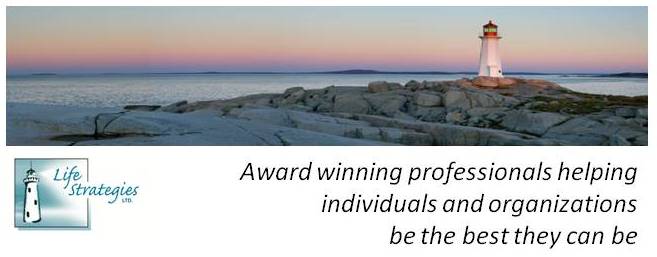
It’s officially spring…a time of endings and new beginnings. William Bridges introduced a transition model that involves 3 different zones…an ending, a neutral zone, and, finally, a new beginning. This is a good time of year to reflect on what each of those zones holds for you.
In Canada, April marks the beginning of a new fiscal year for our government (which, within Life Strategies means an end to several of the government-funded research and development projects we’ve been working on). It’s also the end of the university term – with lots of end-of-term projects and marking but also a chance to look ahead and prep for the new term beginning in a few weeks.
In our gardens, we’re seeing new buds on trees and fresh growth poking through the ground. In front of our new Life Strategies offices we were delighted to see the spindly trees out front erupt with gorgeous pink Magnolia blooms – like a reward for surviving a long and busy winter.
To successfully move on to something new, however, requires attending to all the tasks associated with closure and completion of projects. It’s easy to get excited about new beginnings and ignore those final pieces that wrap up the past season, life stage, or contract.
Within the Life Strategies team, we sometimes engage in “ticky contests” at such transitional times. In our ticky contests, we earn points for completing items on our To Do lists – each task, no matter how small, earns a ticky. Everyone benefits by having the weight of endless to do items finally removed from their shoulders – and all get rewarded (usually with gift certificates); the person with the most tickies, of course, gets doubly rewarded – a shorter “to do” moving into the new season as well as the biggest gift certificate!
The neutral zone is a time of reflection, regrouping, and redirection. It can be an exciting time as old projects are tidied up and new possibilities are considered. However, it can also be a confusing time, with less certainty about schedules and expectations in the months ahead.
Within the Life Strategies team, after extending Amanda Pereira’s contract for 3 “new beginnings,” we’ve now said “au revoir” (the French version of “until we meet again, rather than a more permanent “goodbye”). We have been working full out for the past year and are very much looking forward to a slightly quieter spring and summer for consolidating some of our in-house projects as well as beginning several new external ones. In his work on Flow, Csikszentmihalyi wrote of the importance of matching skills to challenge; in my own “flow” research, I’ve added “resources” to the skills side of the equation – Flow occurs when challenges are carefully balanced to available skills and resources. We can use the neutral zone to replenish resources and re-energize, ready to face new beginnings with energy and excitement.
As you reflect on your own transitions this season:
- What still needs your attention and energy?
- What needs closure?
- What needs to be completed before you can move on?
- What is happening for you in the neutral zone that sometimes comes with springtime?
- Have you taken the chance to re-energize over this Easter long weekend?
- Looking ahead, is there something you need to do to prepare for the upcoming season?
- As you enter a new beginning, what excites you?
- How will you keep your energy up?
- What resources will you need, personally and professionally, for a successful transition?
 With the spring upon us and summer looming, cutting down on fatty food and getting fit becomes a focus for many of us. In the workplace another opportunity presents itself for trimming the fat - our writing. Far too often we write without adhering to the KISS (keep it simple, stupid!) principle. This results in writing full of fluff and fat. In the business and technical setting, writers should strive to be clear and concise; oversized documents aren’t desirable.
With the spring upon us and summer looming, cutting down on fatty food and getting fit becomes a focus for many of us. In the workplace another opportunity presents itself for trimming the fat - our writing. Far too often we write without adhering to the KISS (keep it simple, stupid!) principle. This results in writing full of fluff and fat. In the business and technical setting, writers should strive to be clear and concise; oversized documents aren’t desirable.




